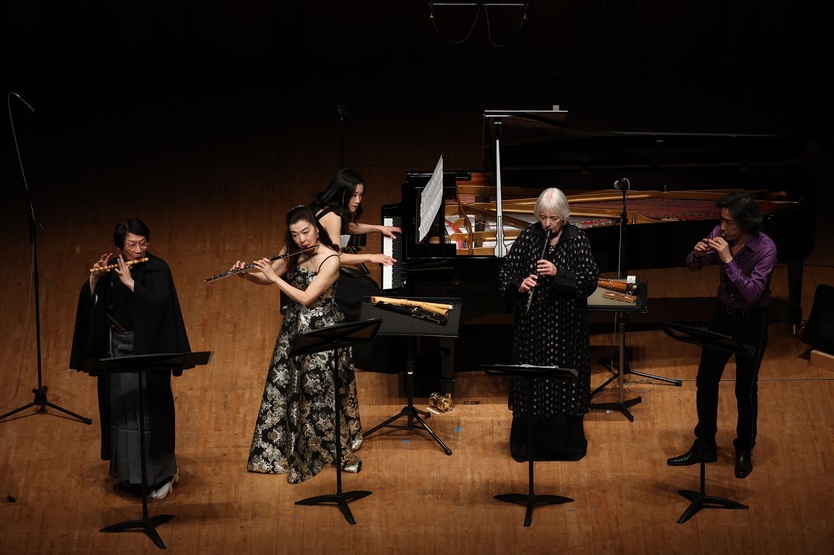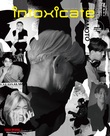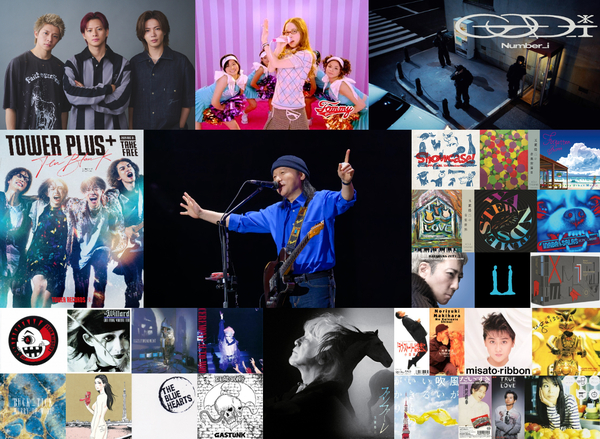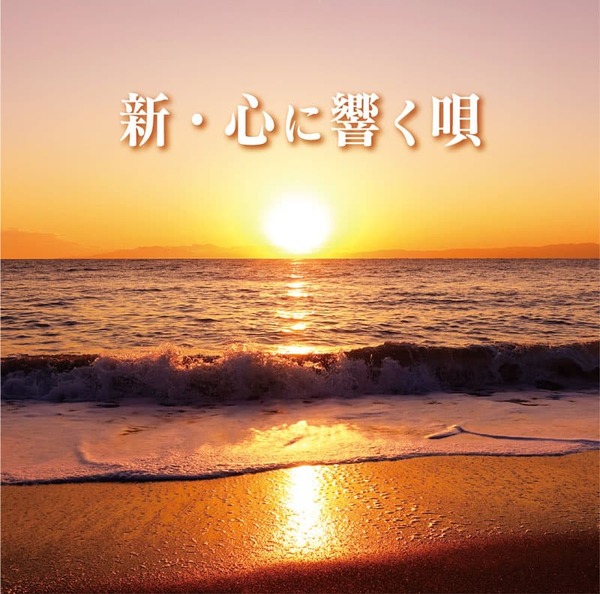
Changing a few performers in Tokyo and Ashiya, the World Flute Festival 2025 was took place. I went to the festival at Kioi Hall in Tokyo, where artists included Michala Petri, the recorderist, Hideki Togi, the Gagaku player, Yumi Yamagata, the flutist, and Yukihiro Isso, the Noh flute player. Each of these instruments has a long history, thought to date back to the Stone Age. I was deeply impressed by its very long history when Isso mentioned on the stage that his heritage from the Momoyama period (Late A.D. 1500s to around 1600) is much more recent than Togi’s from the Nara period (Around A.D. 710 to 794).
The first set of the concert was a series of solos by each performer. And yet, their limited selections of 2, 3 compositions were good enough to deliver their messages and stances. The first was Petri, who played Bach’s Cello Suite No. 1, BWV 1007 to be included in her next project, and variations on the Danish traditional “Mads Doss”. Her virtuosity created a range of sounds from noble and transparent to those resembling plucked strings.
The second performer was Isso, born in the Nohgaku Isso school of Japanese traditional flute, fue-kata, who appeared with Nohkan, Shinobue, and Dengakubue inserted at his hakama waist. 2 of the pieces he played were “Shishi from Noh Ishibashi (獅子~能「石橋」)” and his own composition “The Second Dance of the Transforming Flower: The Hand of the Yamakagashi”, showcasing his another talent as a composer. As he passionately played the Nohkan, the hall resonated with vibrant sounds while his fingers moved rhythmically like a dance.
Next is Yamagata, a flutist. She played three varied songs: “Liebesträume” by Liszt gracefully, “Wings of Water”, a song from the film The Train in Illusory Fog: The Man Who Shot the Tadami Line for 300 Days (霧幻鉄道 只見線を300日撮る男) for which she did the soundtrack, unaccompanied, and “Be My Love”, a hit song by a tenor singer Mario Lanza.
Togi closed the first set in his unique style. He begun with an unexpected backtrack sound, he performed “Autumn Leaves” with Sho, Hichiriki, and piano. Following that was Piazzolla’s “Libertango”. His selection and the performance in rock taste arrangement were stimulating for the audience.
That Togi’s approach, blending Oriental and Occidental elements, provided a smooth transition to the second set, and the musicians expanded this crossover as the set went on. Among the performers, it was Petri who played the most in the set. She played Shostakovich’s “Five Pieces for Two Violins and Piano” with Yumi Yanagata, and it was fascinating due to the completeness of the music’s beauty, but the rest was an unknown world.
“Isso’s Gigue” by Yukihiro Isso was composed for a recorder and Shinobue, and “The Longevity the Dance to Deep Mountains (延年 深山之舞)” instrumentation was for a recorder, flute, Nohkan, and Dengakubue. Especially, the latter was a unique collaboration of a recorder, a flute, and the beat by Nohgaku. Isso remarked that during the rehearsal with Petri, both talked a lot about Fue, flutes. It was clear they connected deeply transcending their varied backgrounds and traditions
“Mitsuboshi (三ツ星)”, a composition by Togi, was played with Hichiriki and Sho. Then this Sho and flute played “Ave Maria”, and its non-fluctuating sound made a synthesizer-like sound, and created a divine atomosphere. And the finale came with the performance by all the musicians playing “Tong Poo” of Ryuichi Sakamoto.
By involving talented musicians who daringly work with artists from various disciplines, I was able to witness chemical interactions sparked by the untapped potential within the instruments. The remarkable performance that could only occur in this setting took place. There many remains other types of flutes, such as a pan flute. Many more possible collaborations are expected in the future.






























